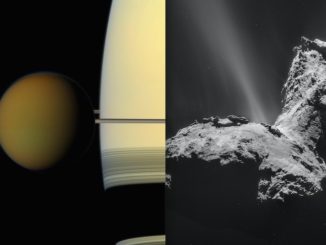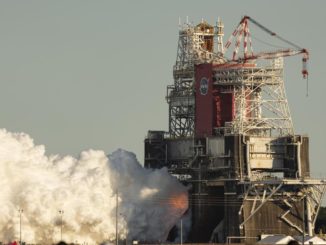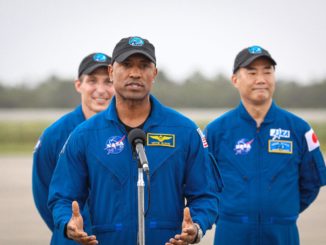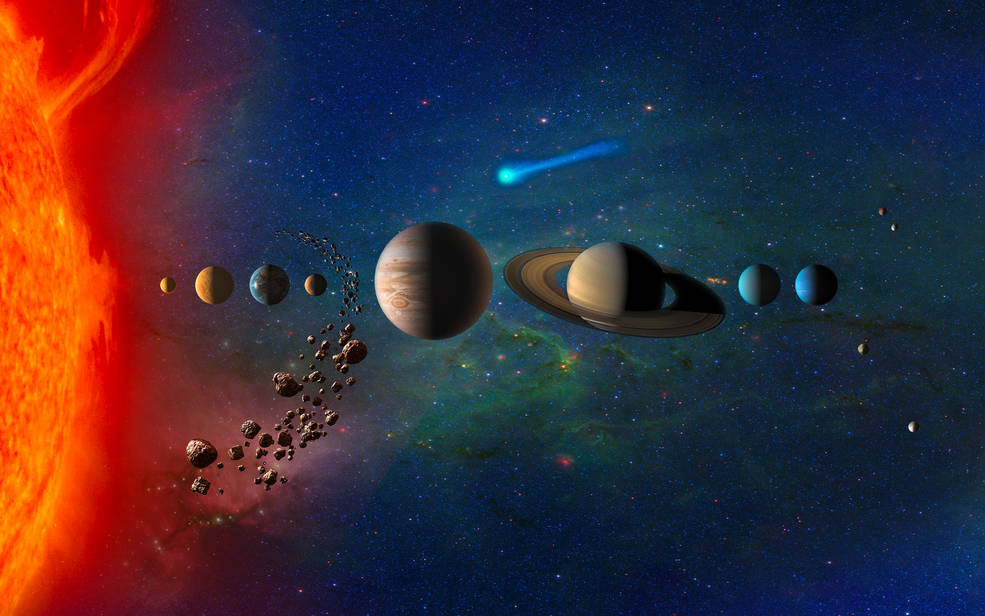
NASA announced Thursday it will fund four concept studies for potential robotic missions to Venus, Jupiter’s moon Io and Neptune’s moon Triton ahead of a decision next year to approve up to two of the projects for launch in the mid-to-late 2020s.
The space agency chose the four mission concepts as semi-finalists from more than a dozen proposals submitted by U.S. scientists last year. NASA plans to select up to two of the final four proposals in 2021 to proceed into full development for a pair of launch opportunities in 2025 or 2026 and 2028 or 2029.
Two of the missions concepts selected by NASA Thursday would explore Venus, Earth’s hellish twin with a dense carbon dioxide atmosphere, clouds of sulfuric acid and scorching surface temperatures as hot as 880 degrees Fahrenheit (471 degrees Celsius).
NASA has not launched a mission to Venus since 1989, when the Magellan radar mapper set off from Earth to peer beneath Venus’s thick clouds and map the planet’s volcanic landscape for the first time.
Another mission approved for further study was the Io Volcano Observer, or IVO, a spacecraft that would orbit Jupiter and pass near the moon Io, the most volcanically active body in the solar system.
And NASA selected Trident — a flyby probe targeting Neptune’s moon Triton — for a detailed concept study. Trident would follow up on observations made by NASA’s Voyager 2 mission in 1989, which revealed Triton — nearly as big as Earth’s moon — harbors geyser-like plumes erupting from its icy surface.
“These selected missions have the potential to transform our understanding of some of the solar system’s most active and complex worlds,” said Thomas Zurbuchen, associate administrator of NASA’s science mission directorate. “Exploring any one of these celestial bodies will help unlock the secrets of how it, and others like it, came to be in the cosmos.”
Each of the mission teams will receive $3 million to perform detailed nine-month studies to mature their concepts and present a report to NASA Headquarters. NASA officials will review the reports and select up to two of the four concepts for development.
The four would-be space missions are vying to become the next two projects in NASA’s Discovery line of cost-capped planetary science missions. NASA solicited proposals last year, and the missions must fit under a $500 million cost cap, excluding launch costs and international contributions.
Here are the four missions selected by NASA:
- DAVINCI+ (Deep Atmosphere Venus Investigation of Noble gases, Chemistry, and Imaging Plus)
- Io Volcano Observer (IVO)
- Trident
- VERITAS (Venus Emissivity, Radio Science, InSAR, Topography, and Spectroscopy)
The DAVINCI+, VERITAS and Io Volcano Observer mission concepts are based on proposals submitted to NASA during past Discovery selection rounds. Trident is a new concept made possible by NASA’s decision to allow scientists to propose using plutonium power generators on Discovery-class probes, enabling budget missions to the outer solar system for the first time.
Previous Discovery-class missions included the Dawn spacecraft, which orbited two of the largest objects in the asteroid belt, the Messenger mission to Mercury, and the InSight lander currently listening for seismic activity on Mars. Two Discovery missions selected in 2017 — named Lucy and Psyche — are scheduled for launch in 2021 and 2022 to begin missions focused on asteroid exploration.
DAVINCI+ and VERITAS are competing to become NASA’s first mission to Venus in more than 30 years.
Led by Jim Garvin, chief scientist at NASA’s Goddard Space Flight Center in Maryland, the DAVINCI+ mission would send a descent probe into the atmosphere of Venus to precisely measure its composition down to the surface, according to NASA. The data will help scientists understand how the atmosphere formed and evolved, and help determine whether Venus ever had an ocean.
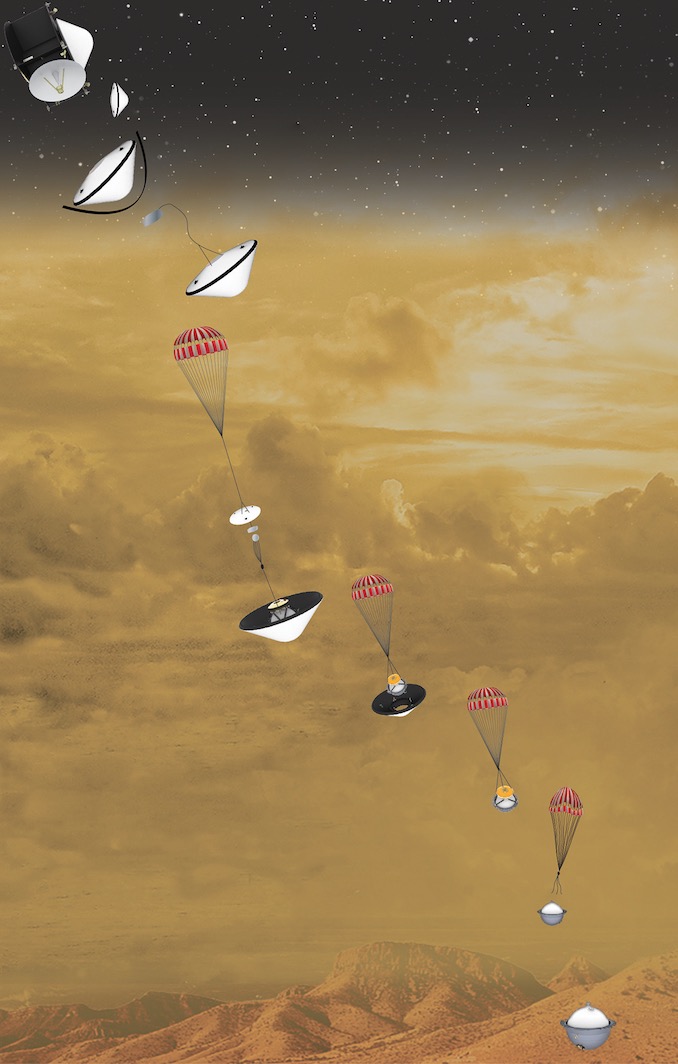
A hardened “sphere” will carry the instruments to the surface of Venus, measuring atmospheric composition and conditions at various altitudes throughout a gradual hour-long descent. Cameras on the descent sphere and an orbiter component to the mission will map surface rock types, according to NASA.
NASA’s Goddard Space Flight Center would manage the mission, and Lockheed Martin would oversee assembly of the DAVINCI+ spacecraft.
“DAVINCI+ is a mission all about a chemistry lab and an orbiter to put venus into its appropriate context in our solar system, so we can compare Venus, Earth and Mars,” Garvin said in a video overview of the mission concept. “And what DAVINCI+ will do scientifically is measure the chemical composition of the entire atmosphere from top to bottom, while imaging the surface in places where rugged mountains exist that are one of the enigmas in our solar system.”
The last U.S.-led mission to send a probe into the atmosphere of Venus was Pioneer Venus in 1978. The Soviet Union’s Vega missions were the last to plunge deep into Venus’s atmosphere in 1985.
“For me, Venus is a very personal thing because I’ve been exploring Venus for 40 years, and now It’s Venus’s time, and we want get back with DAVINCI+ to learn where Venus fits,” Garvin said.
The other Venus mission concept, named VERITAS, would carry a synthetic aperture radar instrument on an orbiting spacecraft to survey the planet’s surface over nearly the entire planet, according to NASA.
“We are designing mission to explore a lost, habitable world,” said Suzanne Smrekar, a research scientist at NASA’s Jet Propulsion Laboratory in California who is principal investigator on the VERITAS proposal. “Venus is Earth’s twin. It started out with the same size, same composition, but it evolved into an extremely inhospitable place. We want to understand how these two rocky planets went down different paths.
“We’re going to be doing things like looking for the surface rock-type, making the first-ever map of the composition of the surface,” Smrekar said. “We’re going to determine where there’s basalt and look for the presence of granite, which is super important for revealing the history of water on Venus. We’re even going look for water coming out of the planet. We’re going to look for and search for geologic activity and help understand its overall geologic evolution.”
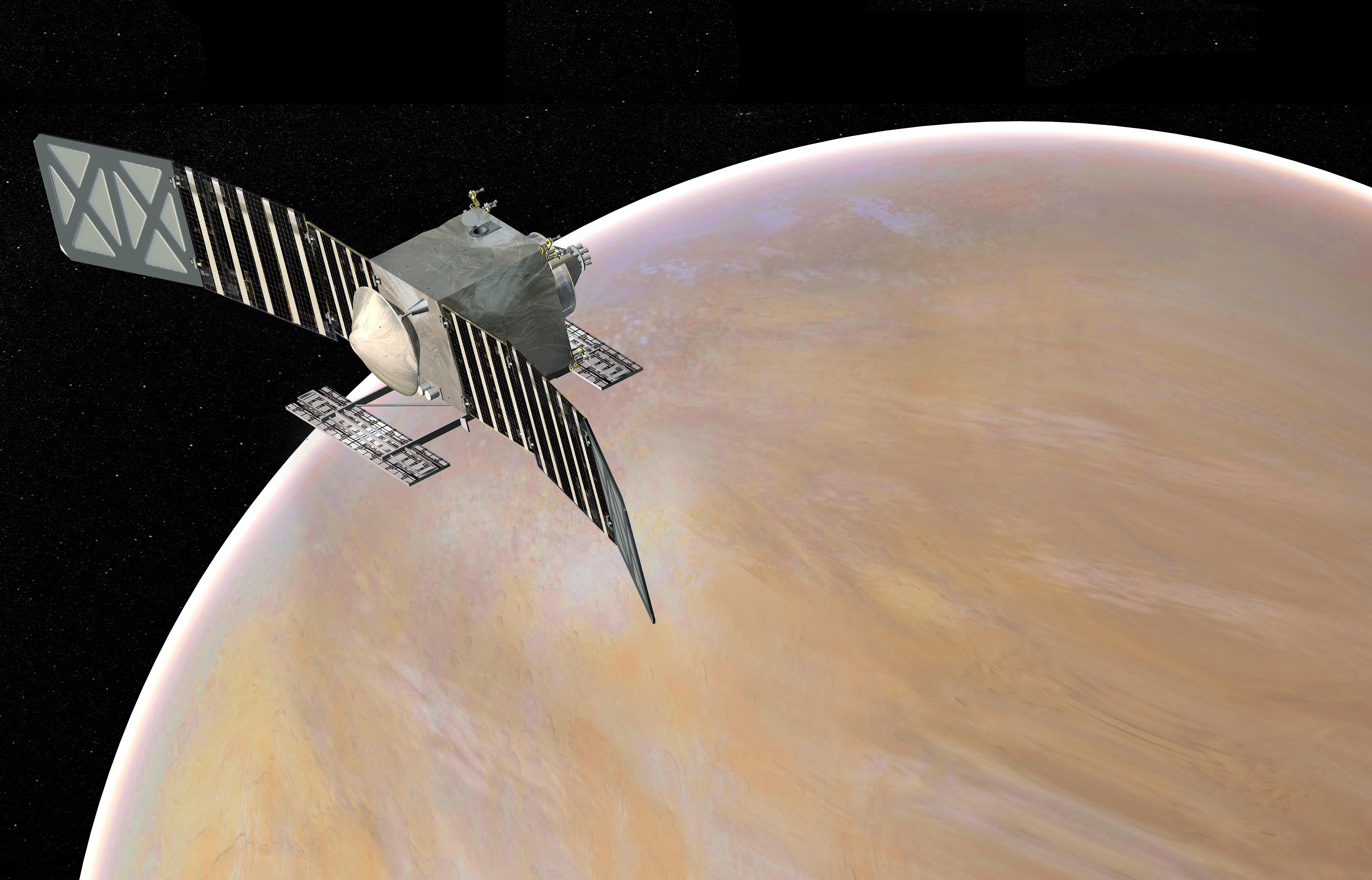
The VERITAS mission would be managed at JPL, and the spacecraft bus would be manufactured by Lockheed Martin. The German, French and Italian space agencies would partner with NASA on the VERITAS mission, assuming it is selected for development.
The Io Volcano Observer mission would launch toward Jupiter, using gravity assist flybys with Earth and Mars to reach the solar system’s largest planet, according to Alfred McEwen, principal investigator on the IVO mission from the University of Arizona.
“IVO, if it goes forward, will launch later this decade, arrive at Jupiter four or five years later, orbit Jupiter, (and) will make 10 close flybys of the insanely active moon Io,” McEwen said. “Io may have a magma ocean (in its interior), and this is really important because magma oceans were key to the early development of all of the inner planets, including the earth and the moon, as well ase exoplanets. So studying a present day magma ocean would be a major advance.”
With more than 400 volcanoes that can spew plumes of gas as high as 300 miles (500 kilometers) above its surface, Io is the most volcanically active body in the solar system. The strong tug of gravity from nearby Jupiter liquifies Io’s insides through tidal forces, pulling material from one side of the moon to the other similar to tidal effects on Earth’s oceans.
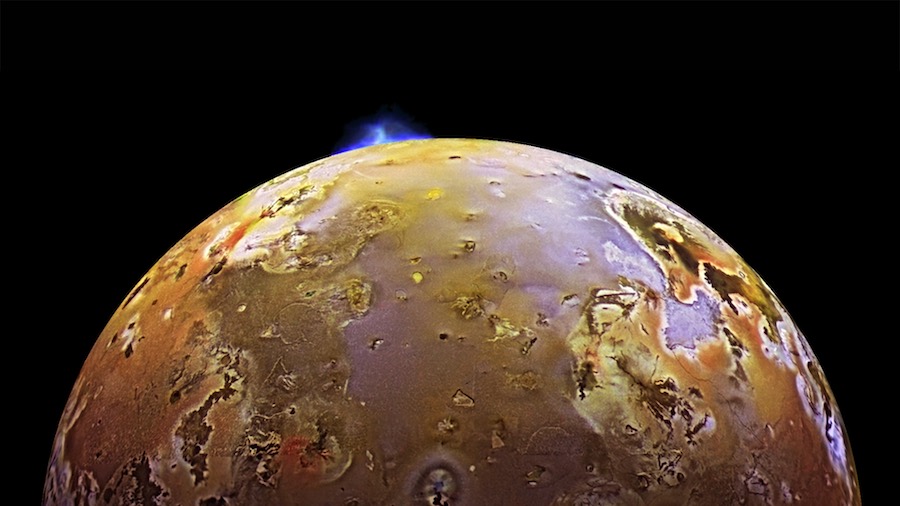
“We will, of course, monitor the spectacular active volcanism with eruptions larger than any seen on Earth since we had mass extinctions,” McEwen said. “Fortunately, we can watch that from a distance.”
The Io Volcano Observer spacecraft would be built and managed at the Johns Hopkins University Applied Physics Laboratory, which previously oversaw construction of NASA’s New Horizons deep space explorer and Parker Solar Probe.
Other partners on the IVO mission include the U.S. Geological Survey, UCLA, the German space agency, and the University of Bern in Switzerland.
The Trident mission to Neptune’s moon Triton would be enabled by a plutonium power source and a speedy trajectory to boost the spacecraft from Earth to its faraway target in 12 years. The flyby mission is similar in its approach to the New Horizons probe, which encountered Pluto in 2015.
Assuming a launch in 2026, the Trident probe could reach Triton in 2038 for a one-shot flyby to build on an initial survey by NASA’s Voyager 2 mission in 1989.
“We are proposing a bold mission to Neptune’s moon Triton,” said Louise Prockter, principal investigator for Trident from the Lunar and Planetary Institute and the Universities Space Research Association in Houston. “We want to explore how icy worlds evolve and what processes are active on them today.
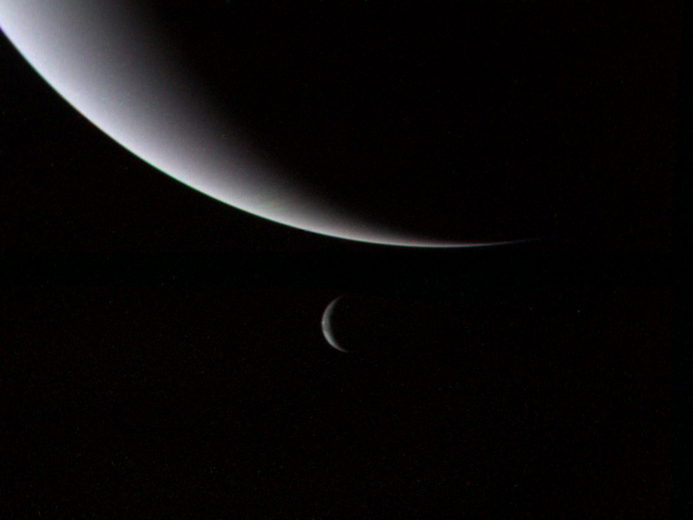
“In particular, we want to know if Triton has an ocean,” she said. “Can a captured body from the Kuiper Belt, which is how (Triton) originated, form an ocean, and can that ocean persist until today? We also want to investigate Triton’s volcanic and tectonic processes, and understand how they lead to what we think is one of the youngest surfaces of any body in the solar system.
“One of those processes leads to plumes — these very large and distinctive plumes — (and) we want to understand whether they’re the result of icy volcanoes, or are they the result of sunlight driving explosions in nitrogen ice. It’s very, very cool
“We also are going to fly through Triton’s ionosphere to understand why it is one of the most intense in the whole solar system of any moon — 10 times more intense than any other moon,” Prockter said. “All of these investigations will lead us to understand whether Triton may be a habitable world, one of the most fundamental questions in all of solar system science.”
If the Trident mission is approved, Ball Aerospace of Boulder, Colorado, will build the spacecraft for NASA.
Email the author.
Follow Stephen Clark on Twitter: @StephenClark1.

